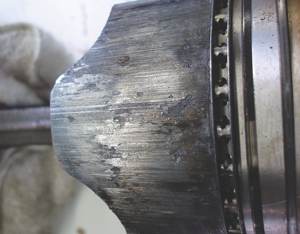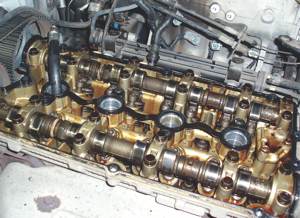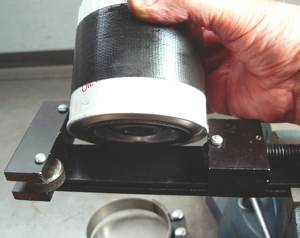
Auto manufacturers, in general, are continuing to reduce vehicle maintenance requirements by extending oil change intervals. But extended oil change intervals are a mixed blessing. On the upside, extending the time between oil changes conserves precious oil and reduces carbon emissions. On the downside, many vehicle owners have become more fortgettful in checking their oil level bet- ween oil changes.
Between-change DIY topoffs have ruined many an engine with excess accumulations of varnish and sludge due to using motor oils that are not approved by the engine manufacturer. In less common instances, the engine fails due to low oil levels and a subsequent lack of lubrication. Whatever the case, extended oil change intervals are changing how we should recommend and perform scheduled vehicle maintenances.
Contrary to many drivers’ opinions, the oil level sensor warns when the engine oil level is critically low. Although many auto manufacturers install oil level warning systems as standard equipment, many vehicles in the current fleet aren’t yet equipped. In other instances, the oil level sensor might not function correctly.
Consequently, it’s always important for the technician to check the engine’s oil level whenever the vehicle is being serviced. If the oil appears very dirty or the oil change interval has nearly expired, an oil change and scheduled service recommendation should be made.
If the oil appears clean but the level is low, always inspect the engine and oil filter for leakage or other signs of oil consumption and make the appropriate service recommendations.
Monitoring Oil Life
Modern oil life monitors use data from the powertrain control module (PCM), such as calculated engine load, trip length and average operating temperature, to measure oil life. It’s not unusual for oil life monitors to extend oil change intervals to 10,000 miles or more.
The primary issue in dealing with oil life monitors is to ensure that the replacement engine oil meets the manufacturer’s extended mileage requirements. The “generic” 5W-30 oil might, for example, expire at 6,000 miles because neither the base oil nor the additive package meets OE requirements, which results in disastrous consequences.
In a few situations, the oil life monitor might not accurately indicate expected oil life. The evidence might be a varnish or sludge accumulation on internal engine parts. Valve train sludge, for example, can often be observed when the engine oil cap is removed for service. Similarly, rust, varnish and sludge can form on the upper portions of the oil dipstick. If varnishing or sludging is apparent, a shorter oil change interval should be recommended.
Controlling Deposits
While lead-free, high-detergent gasoline has dramatically reduced intake port and combustion chamber deposits, modern engine oils are also specially formulated to prevent carbon from forming in the combustion chamber, piston rings from sticking and oil additives from contaminating the catalytic converter.
In particular, modern engines generally use narrow, low-tension piston rings that are fitted very tightly into the piston to increase piston ring sealing and reduce oil consumption. On the upside, low piston ring tension reduces rotating friction and cylinder wear. On the downside, low-tension rings with tight side-gap clearances tend to stick when the incorrect engine oil is used. Therefore, the ability of an engine oil to clean and lubricate the piston ring package is critical.

Anti-Scuffing Issues
Oil suppliers have also eliminated zinc and phosphorous-based anti-scuff additives that reduce catalytic converter efficiency. While the elimination of these particular anti-scuff additives has increased camshaft wear on some high-performance pushrod-style engines, it hasn’t affected overhead camshaft engines due to the lower valve spring pressures used on overhead camshaft designs.
On the other hand, some engines equipped with direct fuel injection require a high degree of anti-scuff protection to prevent the camshaft-driven high-pressure fuel pump and camshaft lobe from wearing out. In most cases, oil refiners have gone to much higher quality base oils to prevent wear on the high-pressure fuel pump and cam lobe. Again, it’s vitally important to make sure that the replacement oil is either OE oil or is approved by the OE manufacturer.
As for older, performance pushrod, flat-tappet engines that are not equipped with catalytic converters, specially branded performance oils are available with anti-scuff additives to prevent camshaft and valve lifter wear. In addition, zinc-based “ZDDP” additives are also available to enhance the anti-scuff qualities of over-the-counter motor oils. Again, these oils and additives are not intended for vehicles equipped with catalytic converters.
Causes of Sludging
Neglected oil change intervals can ruin the best engine oils. As engine oil accumulates miles, it becomes contaminated with carbon, water and various acids, all of which are a by-product of internal combustion and which will form a film of black, gooey sludge on the interior parts of the engine.
Cold-engine operation accelerates the formation of sludge because the oil temperatures aren’t sufficient to evaporate accumulated moisture. Oil sludging is also aggravated by short-trip, cold-weather driving and by thermostats that are stuck open.
When the engine is operated at high speeds and temperatures, sludge often dislodges and clogs the oil filter. Since most oil filters incorporate bypass valves that allow the lubricating oil to flow around a clogged filter media, the dirty oil can pass directly into the engine and clog small-diameter oil galleries.

Getting Dirty
In any case, heavily sludged oil will eventually clog the engine’s oil pump pickup screen, oil filter and oil galleries. The initial symptoms of oil starvation are engines that become noisy during cold start-up and oil pressure gauges that rise very slowly. Broken timing belts are also symptomatic of oil starvation on overhead camshafts. Because the damage usually includes the crankshaft and piston assemblies, don’t be too eager to quote a cylinder head replacement as the cure for a seized camshaft.
All too often, the detergents contained in fresh oil will accelerate the clogging of oil pump screens and oil filters by loosening accumulated sludge. Volumes of engine sludge and dirty engine oil also easily clog today’s compact oil filters.
If the oil filter bypass valve opens during cold starts, more sludge and dirt will pass into the engine bearings and reciprocating parts. In addition, engine life is drastically shortened when operated at extreme loads and temperatures with badly degraded engine oil.
The problem with any heavily sludged engine is that internal repairs tend to dislodge even more sludge into the oil stream. Because attempting to clean an engine in-chassis is both expensive and risky, you can best address the situation by replacing or rebuilding the engine.
Interference with VVT
Most modern engines are very susceptible to lubrication problems because they are equipped with variable valve timing (VVT). A pulse-modulated control valve that meters oil pressure to a hydraulic piston or vane-type camshaft timing phaser controls the amount of advance or retard. A separate valve-timing sensor is used to monitor VVT position.
Quite clearly, the phaser must react to small changes in oil pressure. Since sludge can interfere with the smooth modulation of the oil pressure contained inside the cam phaser, the result can be poor engine performance at specific engine speeds and loads. In many cases, a DTC will be stored that indicates a problem in the VVT system.
Adding it All Up
Since oil prices have climbed dramatically the past few years, customers are becoming more price-sensitive. But it’s also important to understand that, to remain profitable, a shop’s pricing structure for modern vehicle oil change and inspection intervals must be realistic.
In addition, you’re doing a disservice to your customers if you’re exclusively selling low-cost generic engine oils and budget-priced oil filters to meet price-sensitive competition.
OE-specification oils and filters often become the cheaper (and wiser) choice when weighed against a costly engine replacement. If you do the math, it will become clear to you and your customer that using the correct engine oil and filter is the less expensive and far more prudent choice.













